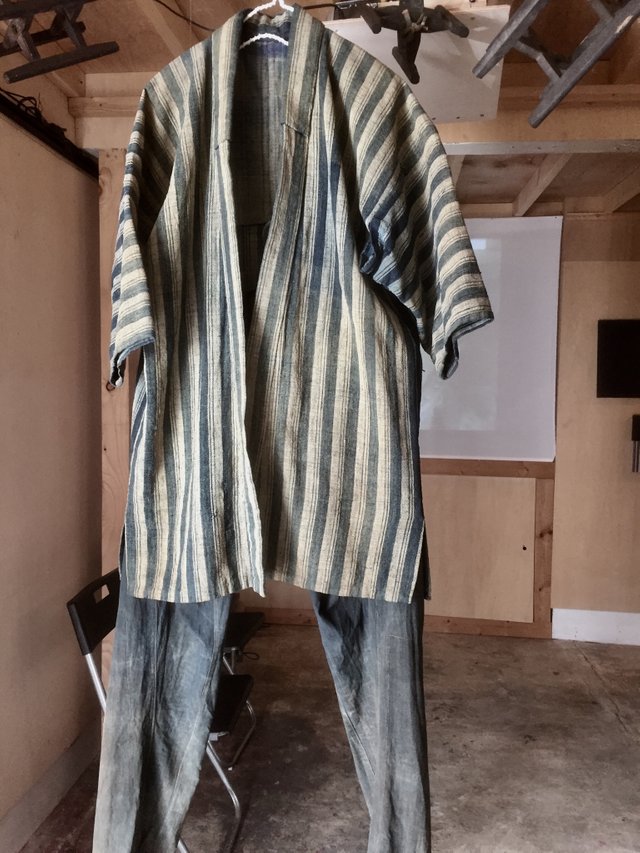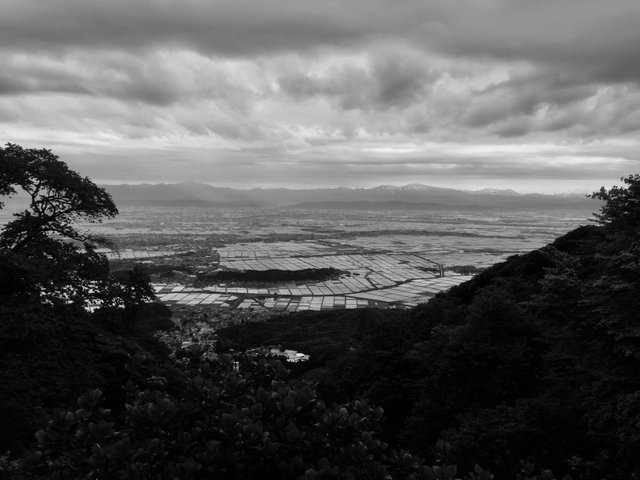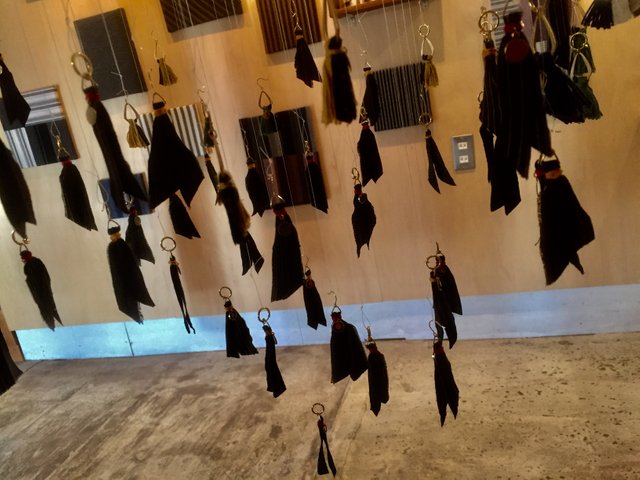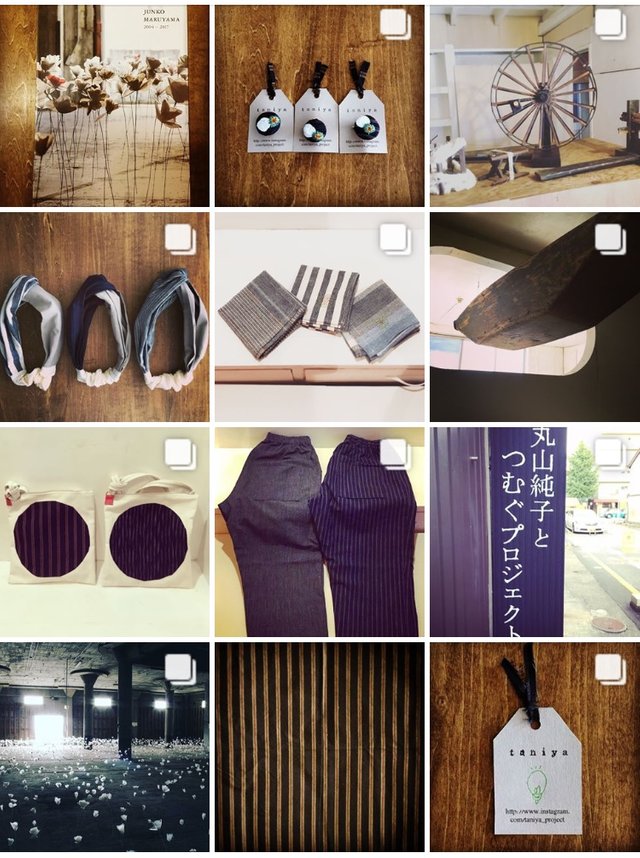Kamedajima: A Textile that went Extinct

Born out of the severe weather conditions and harsh living that characterized the marshlands and rice farming of a small area in Niigata Prefecture, Japan, known as Kameda, kamedajima is a fabric that became famous for two things, its unique striped patterns, and its durability.
Said to become more comfortable with each washing, this fabric, which was capable of clothing farmers and craftsmen in even the harshest of conditions in Japan, could almost be considered the traditional denim of this country. The only thing is, these days, very few people know of it.

Whereas denim, the fabric of jeans, which were originally made to stand up to the rugged conditions of the California Gold Rush, was able to make the transition from being a tough textile that quality worker’s clothes were made from into a material that produced iconic and popular clothing the world over, kamedajima fell out of popularity after World War II to the point where production of it was ceased, and the only remaining samples of it were to be found in museums, the forgotten closets, chests, and drawers of older generations, and, possibly, buried in the racks of thrift stores.
That is, until quite recently. In 2002, a man named Teruo Nakabayashi single-handedly resurrected this extinct textile. Using remaining fabric samples and documents that detailed the original stripe patterns of traditional kamedajima, Mr Nakabayashi was able to, after three years of hard work, unlock the secrets of this fabric’s complex weaving patterns and bring it back into existence.

These days, kamedajima is a high-end fabric. Its complicated weaving patterns don’t allow for it to be produced through complete automation. Highly skilled craftsmen must still be present and involved in its manufacturing. Their presence helps to ensure not only the quality and durability of this beautiful textile, but also the integrity of it as a local and traditional material that has been produced in Kameda for over three hundred years.
Apart from being used to make smaller items like handkerchiefs, Japanese furoshiki, and handheld folding fans, some designers and artisans alike are also using kamedajima to make very fashionable and comfortable clothes, as well as a variety of accessories.
(Furoshiki are like large handkerchiefs that can be tied into small handbags, or used to wrap and carry books, bento lunchboxes, and many other things.)

It is great that the skill in making this fabric has been remembered and that this craftsmanship is not lost, it is funny how years ago it would have been the cloth for the poor yet obviously so much work when into creating it and today because of that reason it is high-end as you have said, things are rarely made to last these days. So much more profit to be made in selling things with a high turn over. Thanks for this @boxcarblue
Downvoting a post can decrease pending rewards and make it less visible. Common reasons:
Submit
Actually, it appears that is exactly what brought about the decline of Kamedajima, after the war Japan was flooded with a variety of cheaper textiles, and they slowly won out.
I think it’s really great, though, that somebody cared enough to devote three years to learning how to make it again and is bringing it back. It really is a nice fabric. Thanks for stopping by.
Downvoting a post can decrease pending rewards and make it less visible. Common reasons:
Submit
I'm all for bringing back old school clothing
Downvoting a post can decrease pending rewards and make it less visible. Common reasons:
Submit
You can’t tell from the picture, but the pattern for the pants in the first photo is really interesting. It consists of two leg tubes that connect to a single back piece and extend forward into two separate front pieces. These front pieces wrap around you and tie shut. The pants cover your nether regions, but are really easy to open up and cop a squat in. They’re old farmer’s pants. They might not go over so well today, but they were neat to see.
Downvoting a post can decrease pending rewards and make it less visible. Common reasons:
Submit
Wow!!! That's awesome.
I'm so glad people get to experience the value of these old school fabrics 💚
Downvoting a post can decrease pending rewards and make it less visible. Common reasons:
Submit
It’s an interesting story, isn’t it? It made me wonder how many other traditional weaving techniques and textiles have disappeared from the world.
Downvoting a post can decrease pending rewards and make it less visible. Common reasons:
Submit
I hear You, we only just re-discovered the secret to long lasting (Roman) concrete.
Downvoting a post can decrease pending rewards and make it less visible. Common reasons:
Submit
Wild, isn’t it? And things like that happen in a personal level too.
Downvoting a post can decrease pending rewards and make it less visible. Common reasons:
Submit
I'd be interested in an oxford shirt in that fabric, but I rather doubt my budget could cover the cost. Strange how so often the food and clothing of the everyman can become an expensive status symbol of those with means.
Downvoting a post can decrease pending rewards and make it less visible. Common reasons:
Submit
That is an odd trend, isn’t it? If you know someone who can see you an Oxford shirt, you could buy the material by the yard without breaking the bank.
Downvoting a post can decrease pending rewards and make it less visible. Common reasons:
Submit
US$15-ish/meter + int'l s&h isn't entirely outside the realm of possibility, no.
Downvoting a post can decrease pending rewards and make it less visible. Common reasons:
Submit
It depends on the shipping and handling. You should check Rakuten. They might have good deals on the S&H. I believe they are international.
Downvoting a post can decrease pending rewards and make it less visible. Common reasons:
Submit